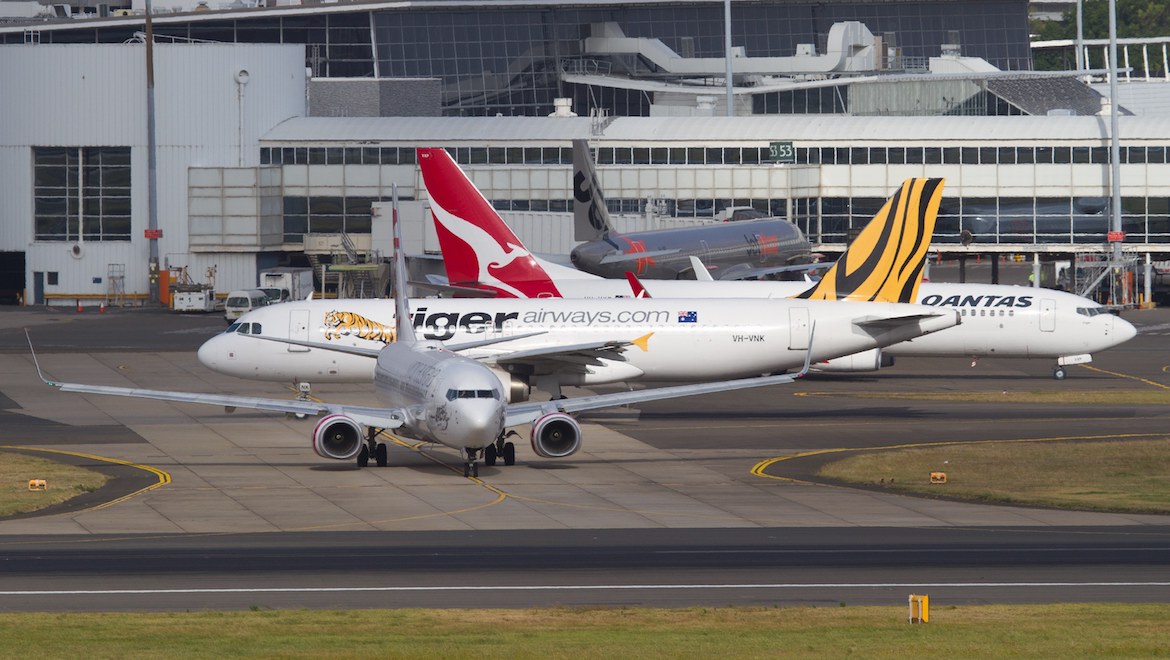
Australia’s domestic airfares fell in May, new figures from the Bureau of Infrastructure, Transport and Regional Economics (BITRE) show.
The BITRE index of business class fares was 121.5 in May 2019, compared with 122.7 in April. The monthly fall of one per cent followed a 6.6 per cent drop in April and brought the annual decline to 7.6 per cent, the biggest yearly fall since 2013.
BITRE also produces a price series adjusted for inflation, which fell by an estimated 8.7 per cent for business airfares over the year to May.
Over the past decade, business class fares fallen marginally, by 0.2 per cent overall. That means they have lagged well behind the average price of other consumer goods and services.
Adjusting for the consumer price index (CPI), business class fares have actually fallen by 19.0 per cent since May 2009, an analysis of the BITRE figures has found.
The highly volatile index of best discount economy airfares dropped sharply in May to 81.5 index points, from 110.0 in April, a 25.9 per cent fall after a 25.3 per cent rise the month before.
Looking past the monthly ups and downs in the best discount category, the 13-month average that BITRE uses to illustrate trends fell to 89.5 in May, the lowest for two years.
The more stable index of restricted economy airfares ended a run of three monthly rises with a drop of 0.5 per cent in May, from 149.1 to 148.6.
The fall brought annual growth down to 6.0 per cent, the slowest for 20 months. Adjusted for inflation, the restricted economy index rose by 4.6 per cent through the year.
In May, the index of restricted economy fares was 32 per cent higher than a decade earlier, or up by 7.2 per cent after adjusting for CPI inflation. By contrast, best discount fares were down by 1.1 per cent from May 2009, or by 19.8 per cent after allowing for inflation.
Both Australian carriers have reported softer market conditions in recent times.
On May 9, Qantas noted in a trading update to the Australian Securities Exchange (ASX) that although there was some strength in the resources market, this was offset by by weakening demand in other parts of the corporate market.
“Domestically, demand is mixed,” Qantas group chief executive Alan Joyce said.
“The resources sector continues to grow and we’re capitalising on that with a lot of extra flying in Western Australia and Queensland.
“We’re seeing increased softness in parts of the domestic corporate market for May and June, particularly financial services, telecommunications and some areas of construction. Growth is also slowing in the small business market.”
Meanwhile, Virgin Australia said in a regulatory filing to the ASX on May 17 it was cutting capacity and record a $100 million decline in underlying earnings for the full 2018/19 amid rising fuel costs and challenging market conditions.
The airline group said demand had weakened in both the corporate and leisure sectors due to to lower consumer and business confidence.
“While we have continued to grow revenue, this announcement shows that our business needs to become more resilient to challenges such as weaker demand, high fuel prices and the foreign exchange environment,” Virgin Australia group chief executive Paul Scurrah said in the trading update.
“There is a lot of work being done to develop our new strategy that will help position the group for long-term success.
“In the meantime, we are focused on short-term improvements including capacity and network reductions to ensure we are better meeting current demand from the corporate and leisure sectors.”















